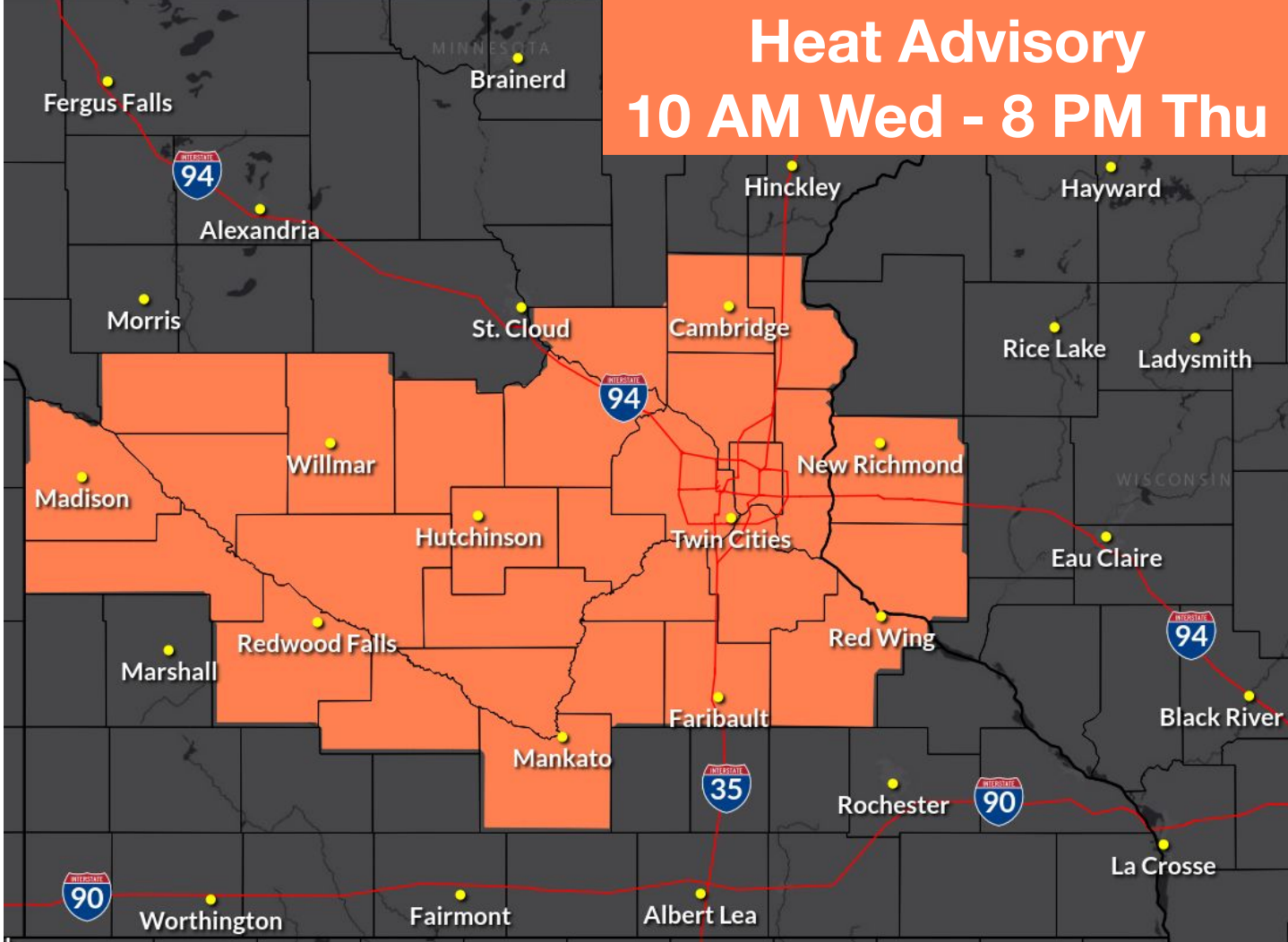Extreme heat’s coming: Here’s how to stay healthy
Published 5:22 pm Tuesday, July 25, 2023

- Image courtesy National Weather Service
|
Getting your Trinity Audio player ready...
|
By Phil Picardi and Gracie Stockton, Minnesota Public Radio News
Temperatures in Minnesota are creeping closer to triple digits, and smoky ozone-filled skies are complicating conditions. Bouts of extreme heat mean an uptick in trips to the emergency room, pets overheating and people without air conditioning needing alternative shelter.
“Trouble starts when it’s too hot or too humid out like it is now today, and our air conditioning system doesn’t work,” Dr. Laalitha Surapaneni, from the University of Minnesota Medical School and M Health Fairview, said Tuesday on MPR News’ Morning Edition.
“And so as heat builds up, it can impact you know, your heart, causing heart failure, it can cause kidney damage, and also impact our brain,” she said. “Heatstroke can be fatal if untreated.”
Negative health effects start to surface when the heat index reaches 86, as the body tries to maintain an internal temperature of 98.6 degrees using its organic air conditioning system: sweating.
Signs of heat-related illness can include excess sweating, headache, lightheadedness, fainting and muscle cramps, Surapaneni said.
“If we don’t pay attention to the symptoms and, you know, hydrate ourselves and get ourselves to a cooler place, we may get into a medical emergency, which is heatstroke,” she said. “[Heatstroke] can involve confusion, a high fever of over 103, skin can feel really hot and red, and loss of consciousness.”
Now is a critical time to check on elderly neighbors, who may be at a higher risk of heatstroke. The same goes for people with preexisting conditions and the very young, Surapaneni said. People who work or exercise outdoors should also listen to their bodies.
Also at risk: People who live in “urban heat islands,” which are created when cities replace the natural landscape with dense amounts of buildings and pavement. Those surfaces absorb and retain heat more than grass or dirt.
“And we know that historically redlined neighborhoods are more likely to have these heat islands, and so communities of color and low-income communities often shoulder a disproportionate burden of extreme heat,” said Surapaneni, who specializes in the impacts of climate change on health equity and sustainable health care delivery.
“When you can’t have access to air conditioning, you’re basically having to choose between paying for medications or paying for your electricity bills, she said.
“And because of excess heat in certain neighborhoods, we also see that polluted air can lead to forming ozone,” she added. “And so not only are these communities dealing with excess heat-held impacts, but then they’re also seeing the poor air quality impacts like asthma; that puts them into hospital as well.”





